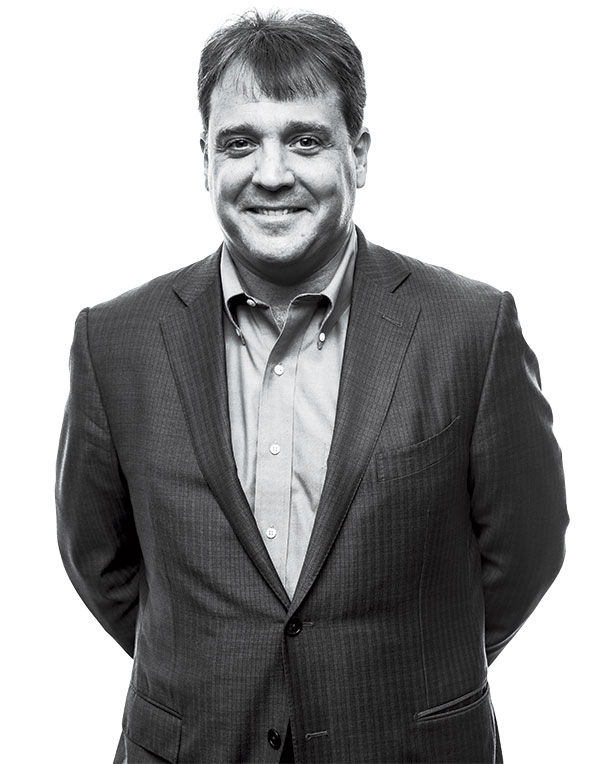
Anthony Bruce of Applied Predictive Technologies. Portrait by Erick Gibson
Applied Predictive Technologies
One of every five U.S. retail transactions runs through the computers of a Ballston-based firm that helps companies decide everything from how to price their sandwiches to how many different colors of sweaters to sell.
As the millennium dawned, Applied Predictive Technologies was drawn to this area by its easy access to airports, its plethora of young talent and the technology culture spawned by MCI and AOL.
“If I said we envisioned the burst of technology infrastructure, capital and engineering technology that has emerged in the subsequent 15 years, I’d be overstating it,” says CEO Anthony Bruce.
From the roughly 20 employees who opened APT’s Ballston headquarters in 2000, the company has grown to more than 250 people with offices around the globe. In 2015 it was purchased by MasterCard for $600 million. The next expansion, which the company announced in August, will keep its headquarters in Arlington and create 368 new jobs.
Even more than APT’s headcount, the amount of data that companies use has exploded in recent years. “Data is very hard for us as organizations, as people, to turn into information and decisions,” says Bruce, a former investment banker with Morgan Stanley and former McKinsey & Co. consultant. “Before making a significant business decision—an investment in capital, a change in price—you should try it first. What works, where and how?”
APT’s proprietary data analytics software allows client companies like Coca-Cola, Walmart and Starbucks to do just that: to test a change and analyze whether customers like it and whether it works better for certain geographic regions or demographic types.
Subway, for instance, wanted to know whether dropping the price of its foot-long sandwiches would drive enough new business to
make up for the lower profit. (So you can thank APT if the $5-foot-long ad jingle is stuck in your head.)
Before big data firms like APT, companies relied on focus groups. But customers are bad at predicting their own behavior, Bruce says. Consumers might, for instance, say that they want 20 colors of sweaters to choose from, but sales figures will later show that their top choices were limited to five colors. With data analytics, a company can offer those 20 choices in a small percentage of catalogues and find out earlier (rather than later) that no one really is going to buy mauve or goldenrod.
Bruce sees Arlington County as a great location for hiring and attracting the young workers who are so key to the tech industry. Arlington has the highest percentage of millennials in the country, according to Arlington Economic Development, and APT has won various awards as a great place to work, particularly for millennials. The company also uses its people and its problem-solving skills to give back, performing “data dives” that help local nonprofits like Goodwill improve their operations.
County officials see data analytics as a key sector for the future and have, along with the state, offered APT $3.25 million in incentives and performance-based grants to stay in the area. After all, there’s still another 80 percent of the economy that APT has yet to capture as clients.
